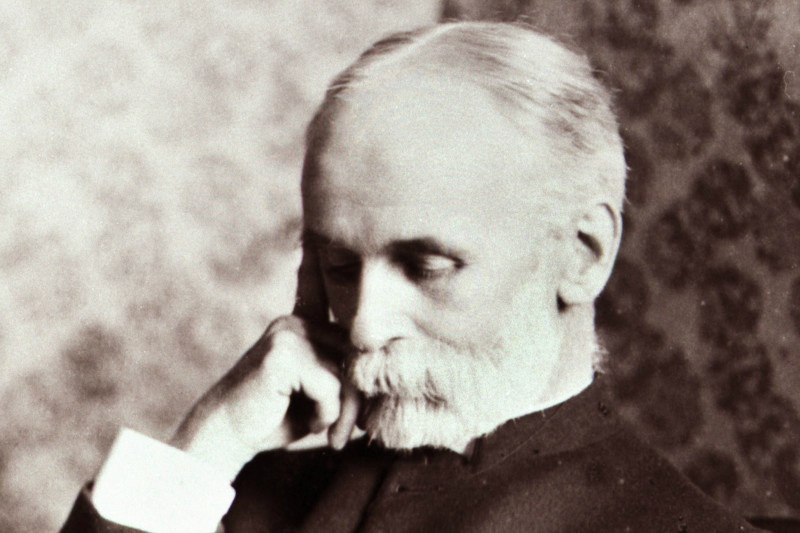Queen's has a long and proud history. Below you will discover how the University came into being and meet some of the people who have helped it become the leading institution it is today.
Rich with heritage
Queen's has a record of academic achievement which stretches back almost 170 years.
Founded by Queen Victoria, the Queen's University in Ireland was designed to be a non-denominational alternative to Trinity College Dublin which was controlled by the Anglican Church.
The University was made up of three Queen's Colleges - in Cork, Galway and Belfast. Although it was the first University in the north of Ireland Queen's drew on a tradition of learning which goes back to 1810 and the foundation of the Belfast Academical Institution.
Its collegiate department, which provided University-style education, closed with the establishment of Queen's and four of its professors and many of its students transferred to the new college.
Founded in 1845, Queen's opened in 1849 when the first students entered the magnificent new college building designed and built by Sir Charles Lanyon. Since then, the University estate has grown to more than 300 buildings - many of them listed for their architectural importance. The first batch of students numbered 90.
The most significant date in the early years of the University's life was 1908 when the three Queen's Colleges, and the Royal University (which replaced the Queen's University in Ireland in 1879), were dissolved and replaced by the Queen's University of Belfast and the National University of Ireland.
As an independent institution, governed by its own Senate, Queen's flourished. Increasing student numbers and new staff were accommodated in a number of new buildings and the academic programme increased in range. Arts, Science, Law and Medicine were supplemented by Faculties of Commerce, Applied Science and Technology, Agriculture, and Theology.
Today, Queen's is one of the leading universities in the UK and Ireland, providing world-class education underpinned by world-class research.

Rev Thomas Hamilton was the first Vice-Chancellor of Queen's
Queen's Vice-Chancellors
The first Vice-Chancellor - and one of the most significant figures in the history of Queen's - was the Rev Thomas Hamilton. He guided the University through a period of change and expansion - setting the standard for his successors as a highly successful fundraiser. Hamilton launched a major campaign urging the Government to increase its grant to Queen's, and he appealed to the public for endowments. Some things never change!The young University continued to expand and develop under the vice-chancellorships of classicist Sir Richard Winn Livingstone, political economist Sir Frederick Ogilvie and historian Sir David Keir, while Sir Eric Ashby - later Lord Ashby - played a major role in ensuring Queen's reputation on the national stage. Dr Michael Grant, a renowned classicist, was chosen to follow Ashby. He was succeeded by physicist Sir Arthur Vick, described as one of the most able administrators to hold the post. Sir Arthur's successor was Sir Peter Froggatt who guided the University with ability, good humour and integrity through a period of great financial upheaval for the higher education sector.After Froggatt came Sir Gordon Beveridge, who led Queen's during one of the most challenging periods in its history. By the time of his retirement in 1997 Queen's was in a healthy financial position, and had developed and enhanced its commitment to equality issues, becoming an exemplar in this field.His successor was the visionary Canadian, Professor Sir George Bain. Under his leadership, the University implemented far-reaching restructuring and investment programmes and initiated the Campaign for Queen's - the most ambitious fundraising exercise in the University’s history.He was followed by Professor Sir Peter Gregson, a Fellow of the Royal Academy of Engineering, who led the University into the Russell Group of the UK’s top 20 research-intensive universities in 2006 and to the title of UK Entrepreneurial University of the Year in 2009. He also led the development of formal strategic international partnerships between Queen’s and leading universities around the world, notably in the United States, India, Malaysia and China.
Professor Patrick Johnston, who succeeded Sir Peter became Vice-Chancellor in 2014. Professor Johnston joined Queen’s in 1996 as Professor of Oncology, later leading the establishment of the Centre for Cancer Research and Cell Biology (CCRCB) and becoming its Director. Prior to taking up post of President and Vice-Chancellor, he was Dean of the School of Medicine, Dentistry and Biomedical Sciences. His own research focus over 25 years has been on the understanding of mechanisms of drug resistance to therapeutic agents. Professor Johnston died suddently on 04 June 2017.
The 13th and current President and Vice-Chancellor of Queen's is the eminent obstetrician Professor Ian Greer, who was appointed in January 2018 and took up office on 1 August. For more on his appointment please visit the University's webpage.